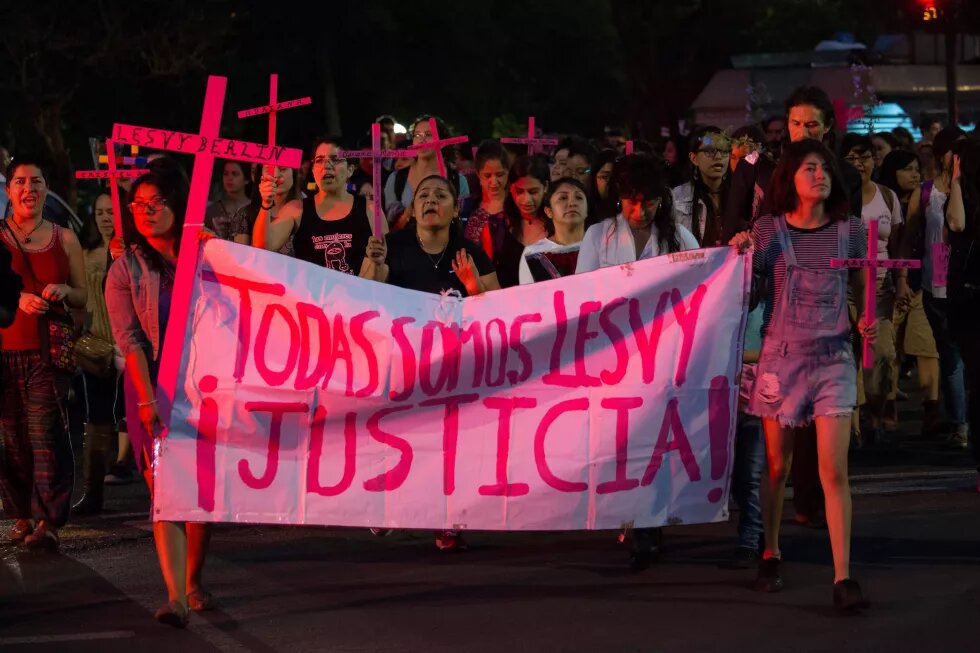Such is the lack of commitment by authorities that some Mexican states even hide data on feminicide to avoid being seen as “dangerous entities” for women

Since the decade of the 1990s Mexico has been considered as a country of high risk to women, especially after the feminicide that occurred in Ciudad Juárez. What then appeared to be an isolated incident proved to be just the tip of an iceberg of horrific daily violence against women in Mexico.
The exact scale of this social scourge, how many lives of women and girls have been devoured by it, and what steps are being taken to stop it, are questions that have been asked repeatedly over two decades.
To provide some answers and at the same time an analysis of what authorities knew, registered, documented and investigated about feminicide, in 2004 the feminist anthropologist and Federal Congresswoman, Marcela Lagarde y de los Ríos, carried out the first research project on feminicide in ten states, comprising a third of the national territory.
The research produced the first data on feminicide in Mexico. In 2004 alone, 1,205 Mexican women and girls were murdered for reasons of gender violence, which is equivalent to four women and/or girls per day.
What the research also uncovered was the disdain on the part of authorities for the investigation of the crimes committed against women, the information disparity among authorities on the subject, the injustice for the victims of feminicide and impunity for offenders.
The official excuse for the absence of information and justice for women murdered as a result of gender-based violence was the lack of a legal framework that would serve as a roadmap. The General Law on Women’s Access to a Life free of Violence in 2007 (LGAMVLV) was the response to this failure. The law also mandated the Federal Government to compile a National Database of Information about Cases of Violence against Women (BANAVIM), including the types and modalities of violence against women.
Neither the Law nor the creation of BANAVIM resolved the issue of institutional negligence. The Database represented a milestone, but it has not achieved what it was mandated to do, namely to provide information that would form the basis of public policy. One reason for this failure is that BANAVIM relies on information provided by the institutions and federal bodies, which creates huge weaknesses. Mexico City, for example, does not have one single database. Also, there is a bias and inaccuracy in the information provided, added to the fact that many governments prefer to hide data on violence against women and feminicide to avoid them being “identified” as dangerous entities for women. The lack of transparency also responds to the first findings in 2004 – the indifference on the part of the government, reflected in the lack of monitoring and inadequate registers for feminicide violence.
According to the First Diagnosis on Sexual Violence in Mexico, carried out in 2016 by the Executive Commission for Attention to Victims, only 6 in 100 sexual aggressions were reported to authorities and of those only half were taken up by authorities. The lack of credibility of authorities, according to the diagnosis, is the main reason for the under-reporting of these crimes.
Impunity is one of the biggest problems in Mexico. Research indicates that 98 per cent of crimes in the country go unpunished. At the heart of this structural problem is impunity for gender-based crimes, which in turn fuels feminicide violence.
Impunity and the lack of a real commitment by the Mexican authorities to comply with its constitutional mandate to protect the human rights of women is an unfortunate combination.
Since the promulgation of the LGAMVLV, the actions by authorities at all levels of the government were based on hindering, fragmenting and weakening that mandate. As a result, the lives of women and girls continue to be destroyed by misogynist violence. We are not only talking about the breakdown of the rule of law, but about the disillusion of new generations of feminists, who see the interaction with the State and its laws as a “failed policy”.
#VivasNosQueremos (We Want Us Alive) was the slogan that rallied women in 27 of the 32 federal entities of the Mexican Republic on April 24, 2016. Brought together by social media, the new weapon of young feminists, it showed their frustration with government inaction to sexist violence. In the demonstrations, all generations of Mexican feminists were to be found, with a leadership comprised wholly of young people. While young women organized, chose the slogans and methods, older feminists participated in the event with face-to-face meetings and by joining the march. However, like in many of these protests, after the march there was no tracking of the fulfilment of the demands or a questioning of the State’s role.
Impunity and the criminalization of legitimate defence of women have become the linchpins of the feminist campaigns, such as the Committee for the Liberation of Yakiri or the university-based demonstrations against the feminicide of Lesby.
Nourishing the resistance is an urgent necessity, as well as establishing political dialogues that bring together strategies for a transformation in gender politics, the eradication of gender inequality and the elimination of violence against us.
It is crucial that international commitments such as the Action Plan EU-CELAC, are not only acts of good faith, but also call for accountability and monitoring both internally and externally. Counterbalances have to be developed from a strong civil society, where the media are key to the transformation to equality of women.